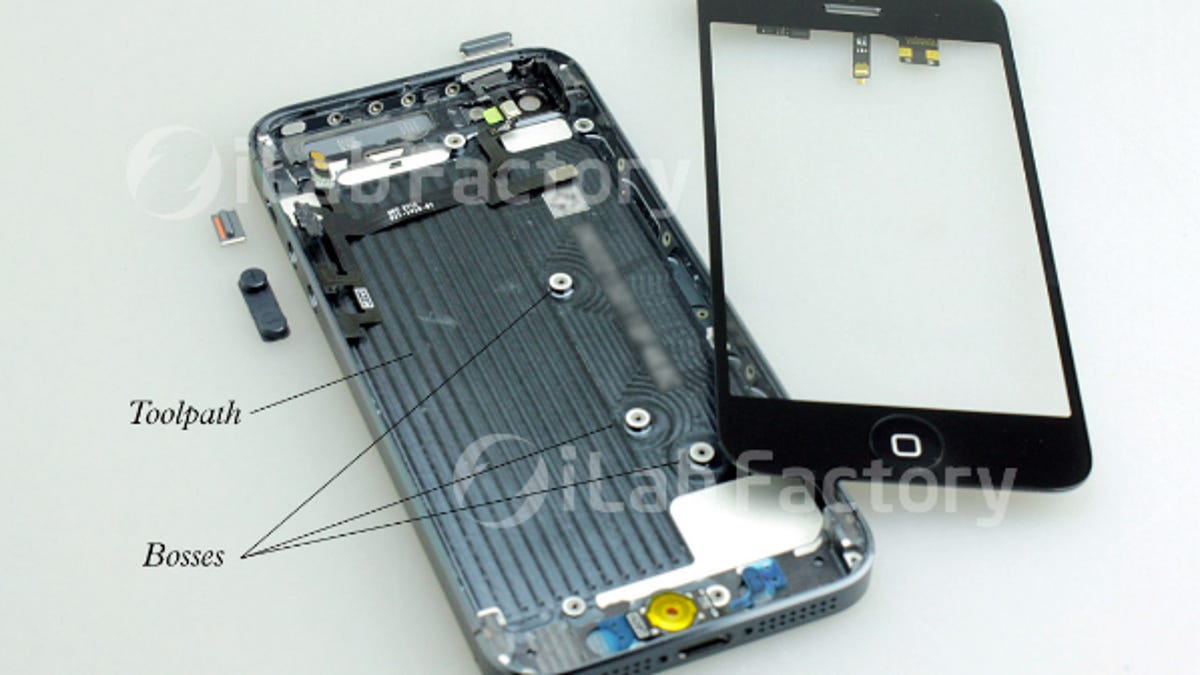An industrial designer's take on the purported iPhone 5
Recent photos and video that allegedly depict the iPhone 5 -- or parts of it anyway -- left some people underwhelmed. But designer Don Lehman takes a closer look, and he thinks the depicted gadget looks pretty boss.

We've been hearing about an upcoming "unibody" iPhone since before the 4S version of the gadget hit the streets. And lately, we've been seeing lots of images on various enthusiast sites of a purported unibody iPhone 5.
But so what, some might say. What's the big deal with this "unibody" anyway? Is it simply a way to remove unsightly seams?
Industrial designer Don Lehman has a nice post up on the Tech Block in which he discusses the ins and outs of the supposed iPhone 5 shown in a video and pictures posted recently by Asian site iLab Factory.
In addition to teaching you what, exactly, a "unibody" is -- essentially a single piece of metal that's been hollowed out so it can hold the phone's guts -- Lehman's post will get you hip to designery jargon such as "bosses" (screw attachment posts), and it'll also show you that the hollowing-out process (in this case anyway) seems to have left a "tool path" that "sort of looks like the lines that are made when a farmer plows a field."
And speaking of "bosses," you'll learn that the bosses here seem to have been milled from the same single piece of metal -- very important, Lehman says:
Those aren't separate pieces -- those are part of that same unibody piece. They are the most important detail of this design. Having those bosses integrated into the material allows for the part to be stronger, thinner, and lighter. It condenses several parts into one better part.
Lehman does a superb job of emphasizing just how sweet "thinner" might turn out to be, if this in fact turns out to be the iPhone 5:
Thinness is a major feature of this design. Take a look at your iPhone 4/4S from the side. Now imagine that the new design is only as thick as the metal band. That's a big deal. From my estimates, that would make this design anywhere from 2-3mm thinner than the iPhone 4S. That sounds small, but it's a huge difference. That's as much as 32 percent thinner. As a point of comparison, the Retina MacBook Pro is only 25 percent thinner than the old MacBook Pro.
Point taken. We could just about slip this thing into our sock. All told, Lehman manages to quite nicely stoke the flames of iPhone fanaticism and Apple-design devotion, even if these iLab images initially left some people underwhelmed:
At first glance it doesn't appear to be dramatically different from its predecessor, but when you really dig into it, there are a ton of changes that make it appreciably nicer. If you aren't excited about it now, you will be when you see one in person. Classic Apple design refinement.
Give Lehman's discussion a read, then jump back here and let us know your own thoughts in our comments section. Do you agree with Lehman that the phone depicted in the iLab images may well be "an actual production sample of the next iPhone"? Or is it a very elaborate hoax?
Oh, and by the way: Aside from the pure geek-out pleasure to be had in reading Lehman's discussion, your newfound design knowledge could come in handy if you ever get called to testify at some sort of patent trial or something.

